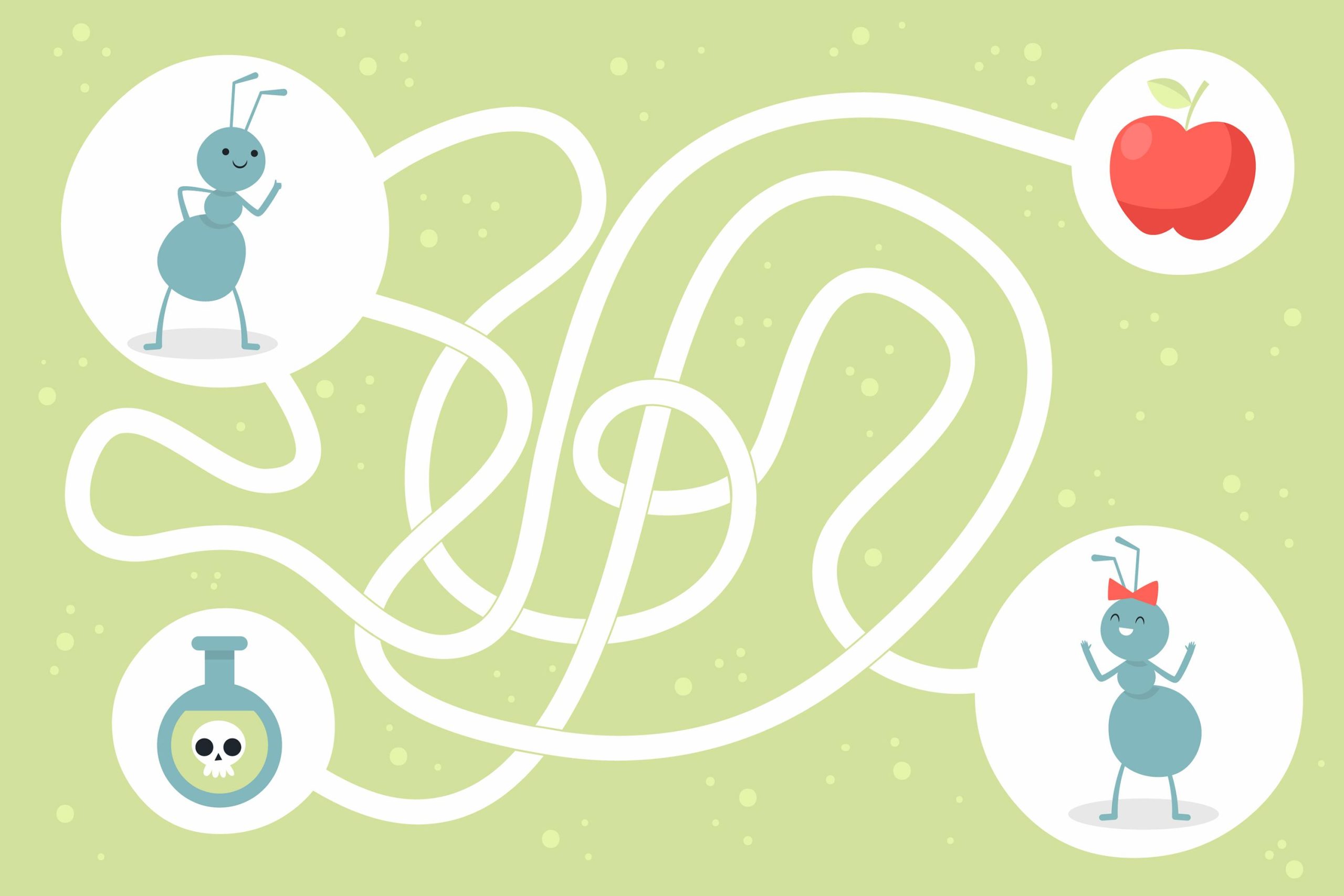They say that a picture is worth a thousand words, but what about a riddle? How can a few carefully chosen words capture the imagination and curiosity of a child? If you’ve ever wondered about the magic behind crafting riddles for kids, then prepare to be amazed. In this discussion, we will reveal the secrets to creating captivating riddles that will keep children guessing and begging for more. Get ready to unlock the power of words and embark on a journey of creativity and fun. Are you up for the challenge?
What Is a Riddle?
Riddles are intriguing puzzles that challenge your mind with hidden meanings and clever wordplay. They come in various forms and can be found across different cultures and time periods. Common riddle themes include nature, animals, objects, actions, and even abstract concepts. There are different types of riddles, such as enigmas, conundrums, and lateral thinking puzzles, each with its own unique style and solution.
Solving riddles offers many benefits. It improves critical thinking skills, problem-solving abilities, and lateral thinking. Riddles also enhance vocabulary, as they often require you to interpret words in unconventional ways. Additionally, they promote creativity and imagination, as you have to think outside the box to find the answers.
Riddles have a significant presence in literature and popular culture. They can be found in famous works like J.R.R. Tolkien’s “The Hobbit,” where Bilbo Baggins engages in a battle of wits with Gollum through a series of riddles. Riddles are also a popular element in movies and TV shows, adding intrigue and suspense to the plot.
Moreover, riddles serve as a valuable learning tool. They make learning enjoyable and engaging, allowing children to develop problem-solving skills while having fun. Riddles can be incorporated into educational activities and lesson plans to enhance critical thinking and language development. They encourage active participation and stimulate intellectual curiosity.
Getting Started
To begin your journey into the world of writing riddles, let’s explore some helpful tips and techniques that will guide you in crafting engaging and thought-provoking puzzles for kids. The first step is brainstorming techniques. Take some time to think about the subject of your riddle and jot down descriptive phrases and words related to it. This will help you come up with clues that lead to the answer.
Next, consider incorporating wordplay. Puns, synonyms, and antonyms can add depth and intrigue to your riddle. Play with words and their multiple meanings to create clever and unexpected clues.
Creating vivid imagery is another important aspect of writing riddles. Use metaphors, similes, and other literary devices to paint a picture in the reader’s mind. Make the subject of your riddle come alive with colorful and imaginative descriptions.
Using metaphors and similes can also help you create unique and interesting clues. Compare the subject of your riddle to something else to provide additional hints and make the riddle more challenging.
Lastly, finding the right level of difficulty is crucial. Make sure your riddle is challenging enough to engage the reader’s mind, but not so difficult that it becomes frustrating. Aim for a balance that will keep kids entertained and eager to solve the puzzle.
The Rules
Now that you have learned some helpful tips and techniques for crafting engaging riddles, it’s important to understand the rules that will ensure your riddles are challenging, concise, and fun for kids to solve. Here are some key rules to keep in mind:
- Importance of Clues in Riddles: Clues are the heart of a riddle. They provide hints and guide the solver towards the answer. Make sure your clues are clever, but not too obvious. Strike a balance between challenging and solvable.
- Tips for Crafting Engaging Riddles: Use your creativity to come up with unique and interesting riddles. Think outside the box and surprise your audience. Incorporate wordplay, such as puns or homophones, to add an extra layer of fun.
- Incorporating Wordplay in Riddles: Wordplay is a great way to make your riddles more entertaining. Play with words, use double meanings, or create clever twists to keep the solver on their toes.
- Using Descriptive Language in Riddles: Descriptive language helps paint a vivid picture in the solver’s mind. Use metaphors, similes, and descriptive adjectives to create engaging and memorable riddles.
- How to Make Riddles Challenging but Solvable: Strive to make your riddles challenging, but not impossible to solve. Avoid making them too obscure or relying on obscure knowledge. Test your riddles with a diverse group of people to ensure they are accessible to a wide range of solvers.
About the Author
Kenn Nesbitt, the celebrated children’s poet known for blending humor and heart in his poetry, has captivated young readers worldwide with his books like ‘My Cat Knows Karate’ and ‘Revenge of the Lunch Ladies’. His writing style is filled with playful language, catchy rhythms, and clever wordplay, making his poems both entertaining and educational for children. Nesbitt understands the importance of humor in children’s poetry, using it to engage young readers and make poetry accessible and enjoyable. His books have had a significant impact on young readers, sparking their interest in poetry and encouraging them to explore their own creativity.
In addition to his success as an author, Kenn Nesbitt also served as the U.S. Children’s Poet Laureate, a prestigious position that allowed him to promote the importance of poetry in children’s lives. Through his role, he has continued to engage children with poetry by visiting schools, conducting workshops, and sharing his love for writing. Nesbitt’s passion for poetry shines through in his interactions with young readers, inspiring them to embrace their own creativity and find joy in the written word. Whether through his books or his role as the Children’s Poet Laureate, Kenn Nesbitt has made a lasting impact on children’s literature, fostering a love for poetry that will endure for years to come.
Materials and Resources
You will need a few materials and resources to start creating your own riddles. Here are some things that will come in handy:
- Pencil: You’ll need a trusty pencil to jot down your ideas and make any revisions along the way.
- Paper: Grab some paper to write your riddles on. This way, you can easily keep track of all your brainstorming and drafts.
- Books with riddles: Take inspiration from existing riddles by diving into books that are filled with them. Some great options include “The Hobbit” and “365 Days of Riddles.”
- Rhyming Riddles Copywork by Susan Brown: This resource provides you with examples of rhyming riddles, which can help you understand how to incorporate wordplay and engage your audience.
Now that you have your materials, it’s time to get creative! Start by brainstorming techniques to come up with unique and clever riddles. Consider incorporating wordplay, using descriptive language to paint a vivid picture, and adding a twist to your riddles to keep your audience guessing. Remember, the key is to engage your audience and make them think. So, have fun exploring different ideas and let your imagination run wild!
Analyzing and Deciding on the Answer
When creating a riddle, the first step is to analyze the clues and decide on the answer. Take a good look at the riddle and think about what it is trying to convey. What are the key words or phrases that stand out? Analyzing the clues will help you determine the answer that best fits the riddle.
Once you have a possible answer in mind, it’s time to brainstorm descriptive phrases that will lead the guessers to the correct solution. Think about how the answer looks, sounds, or feels. Use your imagination and come up with creative descriptions. You can also use literary tools like metaphors or similes to make the riddle more engaging.
After brainstorming descriptive phrases, it’s important to share your riddle with others. Speaking the riddle aloud will help you refine it and make sure it flows smoothly. Give your listeners plenty of time to think and guess the answer. Sharing your riddle with friends and family will also give you feedback on its effectiveness.
Writing Techniques
Using creative writing techniques is essential when crafting riddles that are engaging and challenging for kids to solve. To make your riddles truly captivating, try these techniques:
- Brainstorming techniques: Start by brainstorming descriptive phrases and words related to the answer. This will help you come up with unique and interesting clues.
- Using metaphors and similes: Incorporate metaphors and similes to describe the answer in a creative and imaginative way. This will add depth and intrigue to your riddle.
- Incorporating puns and wordplay: Play with words and use puns to add a playful and clever element to your riddles. Wordplay can make the riddles more fun and entertaining for kids.
- Finding the right level of difficulty: It’s important to strike a balance between a riddle that is too easy and one that is too difficult. Consider the age and knowledge level of your audience to ensure the riddle is challenging yet solvable.
- Engaging the audience through storytelling: Use storytelling elements to create a narrative or scenario within your riddle. This will make the riddle more engaging and encourage kids to use their imagination while solving it.
Sharing and Presenting the Riddle
To make your riddle experience even more enjoyable, it’s time to share and present your riddle to others. Engaging the audience is key to creating a fun and interactive riddle experience. When sharing your riddle, try to create suspense by speaking loudly and clearly, giving guessers plenty of time to think and come up with the answer. This not only encourages critical thinking but also allows everyone to participate and feel involved.
Incorporating humor into your presentation can add an extra element of enjoyment. You can use funny voices or gestures to enhance the delivery of your riddle. Fostering creativity is also important, as it allows for different interpretations and solutions to the riddle. Encourage your audience to think outside the box and come up with their own unique answers.
Understanding Riddles
Now that you have learned how to share and present your riddle, let’s dive into the fascinating world of understanding riddles. Here are some key points to help you understand the magic behind these brain-teasers:
- Different types of riddles for kids: Riddles come in various forms, such as wordplay, logic puzzles, and visual riddles. Each type offers a unique challenge and keeps kids engaged.
- Benefits of solving riddles for children: Solving riddles not only provides entertainment but also offers educational benefits. It helps improve vocabulary, problem-solving skills, and critical thinking abilities.
- How riddles can enhance critical thinking skills in kids: Riddles encourage children to think creatively, analyze information, and come up with logical solutions. They promote cognitive development and improve reasoning skills.
- Incorporating riddles into educational activities for kids: Riddles can be incorporated into various educational activities, such as language arts, math, and science lessons. They make learning fun and engaging while challenging kids to think outside the box.
- Fun ways to present riddles to children: You can present riddles through games, treasure hunts, or riddle competitions. Creating a playful and interactive environment will make the riddle-solving experience enjoyable for kids.
Understanding riddles is like unraveling a puzzle. It not only stimulates the mind but also enhances critical thinking skills in children. So, get ready to explore the world of riddles and let your imagination soar!
Choosing a Riddle Subject
When choosing a subject for your riddle, it’s important to select something that is familiar to your audience and can be easily personified. Popular riddle themes include animals, objects found in nature, everyday items, and actions. These engaging riddle subjects are relatable and make it easier for children to understand and solve the riddle.
Familiar objects for riddles can be anything from a pencil to a book to a tree. By choosing objects that kids encounter in their everyday lives, you make the riddles more relatable and accessible. It’s important to consider the age of your audience when selecting the subject. Younger children might enjoy riddles about animals or toys, while older children might prefer riddles about books or technology.
Incorporating humor in riddles can make them more enjoyable and entertaining for kids. You can use puns, wordplay, or unexpected twists to add a comedic element to your riddles. For example, you could create a riddle about a banana that tells jokes or a pencil that loves to draw silly pictures.



